Breast Augmentation in Philippines
Find the best clinics for Breast Augmentation in Philippines
With Medijump you can browse 18 facilities offering Breast Augmentation procedures in Philippines. The cheapest price available is $3,058 in Metro Manila. And for the cheapest price globally, prices start from $208 in Hungary.
Breast Augmentation in Metro Manila
Price: $ 3,058
Hungary offers the best prices Worldwide
Price: $ 208
From 2 verified reviews
Jacqueline Osuna, 17 February 2017
Everyone was so nice and attentive. Doctors were great and very approachable. I felt at home with them. 😊 service was awesome too and the place is so neat and comfortable. 👍
From 1 verified reviews
toni de guzman, 29 November 2017
The place is tidy with a cozy ambiance. The consultation room is very relaxing, the space is not cramped, and the doctor is warm and accommodating. I had one session of Laser brightening peel on my face which I highly recommend! It lessens oiliness and breakouts and leaves a remarkable glow on the skin. Thumbs up for this procedure, It's a winner!
From 93 verified reviews
Steve Frost, 20 September 2020
Best hospital in delhi ncr. Good quality of treatment and takes good care of patients.
From 133 verified reviews
Mari Delos Santos, 16 April 2020
The main lobby will give you a feeling of being in a resort or hotel lobby. The newly open Central Park will be an extra treat, an amenity area that will give patients and visitors the feeling of being at home in their own garden. Doctors here are the best in the country. State of the art facilities and high tech medical equipment. How I wish every Filipino can experience the medical care and assistance at Thé Medical City.❤️ March 4, 2020, I went to the Ambulatory Service Center- as usual long line but patients are comfortably seated and patiently waiting. I have been on food and water fasting for my blood extraction. Not to over fast I approached the lady at the counter 4, to let her know of my situation. She was so quick in attending to my concern and never ask for anything, not even my ID or HMO. She accompanied me at the blood extraction area and everything I need was well taken cared of because of her. Thank you very much Ms. Maria Concepcion Calayan Golla for your kind assistance and compassion. Keep up the excellent work. May your tribe increase. All the best!❤️
From 2 verified reviews
Marivic Barrientos, 03 June 2020
I'm proud to say that I am one of his patient . Its been 15 yrs, still happy and contented from his work of art.Thanks dr. lajo .
St. Luke's Medical Center, located in Makati, Metro Manila, Philippines offers patients Breast Augmentation procedures among its total of 258 available procedures, across 29 different specialties. Currently, there's no pricing information for Breast Augmentation procedures at St. Luke's Medical Center, as all prices are available on request only, whilst the national average price is approximately ฿117,144. There is currently a lack of information available on the specialists practicing at the Clinic, and they have multiple recognized accreditations, including: JCI AccreditedTEMOS
JMW Plastic Surgery, located in Alaminos, Pangasinan, Philippines offers patients Breast Augmentation procedures among its total of 90 available procedures, across 1 different specialties. Currently, there's no pricing information for Breast Augmentation procedures at JMW Plastic Surgery, as all prices are available on request only, whilst the national average price is approximately $3,255. All procedures and treatments are undertaken by the lead specialist at the Hospital, and they are accredited by PAPRAS - Philippine Association of Plastic, Reconstructive and Aesthetic Surgeons
From 2 verified reviews
Lolita Ordinario, 20 February 2019
Very good Doctor,very good services
From 12 verified reviews
Kinny Salas, 18 March 2020
Reasonable price, very clean and relaxing. Best facials and they treated my hyperkeratosis and pigmentation
From 12 verified reviews
Kinny Salas, 24 February 2020
Reasonable price, very clean and relaxing. Best facials and they treated my hyperkeratosis and pigmentation
From 37 verified reviews
D Nacita, 20 July 2020
Our father was just released there and they took excellent care of him! We recommend this hospital highly! Dr. Ecarma was amazing!
From 4 verified reviews
lol lol, 30 July 2019
no phone no hmo. no cash utash ka sa sakit mo
Borough Medical Care Institute, located in Butuan, Agusan del Norte, Philippines offers patients Breast Augmentation procedures among its total of 25 available procedures, across 2 different specialties. Currently, there's no pricing information for Breast Augmentation procedures at Borough Medical Care Institute, as all prices are available on request only, whilst the national average price is approximately $3,255. All procedures and treatments are undertaken by the lead specialist at the Hospital, and they have multiple recognized accreditations, including: PBPS - Philippine Board of Plastic SurgeryPAPRAS - Philippine Association of Plastic, Reconstructive and Aesthetic SurgeonsPCS - Philippine College of Surgeons
Dr. Marlon O. Lajo Manila Doctors Hospital, located in Manila, Metro Manila, Philippines offers patients Breast Augmentation procedures among its total of 25 available procedures, across 2 different specialties. Currently, there's no pricing information for Breast Augmentation procedures at Dr. Marlon O. Lajo Manila Doctors Hospital, as all prices are available on request only, whilst the national average price is approximately $3,255. All procedures and treatments are undertaken by the lead specialist at the Hospital, and they have multiple recognized accreditations, including: PBPS - Philippine Board of Plastic SurgeryPAPRAS - Philippine Association of Plastic, Reconstructive and Aesthetic SurgeonsPCS - Philippine College of Surgeons
Dr. Marlon O. Lajo Batangas, located in Lipa, Batangas, Philippines offers patients Breast Augmentation procedures among its total of 25 available procedures, across 2 different specialties. Currently, there's no pricing information for Breast Augmentation procedures at Dr. Marlon O. Lajo Batangas, as all prices are available on request only, whilst the national average price is approximately $3,255. All procedures and treatments are undertaken by the lead specialist at the Hospital, and they have multiple recognized accreditations, including: PBPS - Philippine Board of Plastic SurgeryPAPRAS - Philippine Association of Plastic, Reconstructive and Aesthetic SurgeonsPCS - Philippine College of Surgeons
Dr. Amy Anti-Aging and Cosmetic surgery Center - Ozamiz, located in Butuan, Agusan del Norte, Philippines offers patients Breast Augmentation procedures among its total of 18 available procedures, across 5 different specialties. Currently, there's no pricing information for Breast Augmentation procedures at Dr. Amy Anti-Aging and Cosmetic surgery Center - Ozamiz, as all prices are available on request only, whilst the national average price is approximately $3,255. All procedures and treatments are undertaken by just a small team of specialists, with 2 in total at the Hospital, and they have multiple recognized accreditations, including: APACS - Asian Pacific Academy of Cosmetic SurgeryAAAM - American Academy of Aesthetic MedicineA4M - American Academy of Anti-Aging MedicinePSCS - Philippine Society for Cosmetic SurgeryPSLSI - Philippine Society of Liposuction Surgery
Dr. Amy Anti-Aging and Cosmetic surgery Center - Gaisano, located in Butuan, Agusan del Norte, Philippines offers patients Breast Augmentation procedures among its total of 18 available procedures, across 5 different specialties. Currently, there's no pricing information for Breast Augmentation procedures at Dr. Amy Anti-Aging and Cosmetic surgery Center - Gaisano, as all prices are available on request only, whilst the national average price is approximately $3,255. All procedures and treatments are undertaken by just a small team of specialists, with 2 in total at the Hospital, and they have multiple recognized accreditations, including: APACS - Asian Pacific Academy of Cosmetic SurgeryAAAM - American Academy of Aesthetic MedicineA4M - American Academy of Anti-Aging MedicinePSCS - Philippine Society for Cosmetic SurgeryPSLSI - Philippine Society of Liposuction Surgery
Regenestem Manila, located in Butuan, Agusan del Norte, Philippines offers patients Breast Augmentation procedures among its total of 16 available procedures, across 3 different specialties. Currently, there's no pricing information for Breast Augmentation procedures at Regenestem Manila, as all prices are available on request only, whilst the national average price is approximately $3,255. There are many specialists available at the Hospital, with 6 in total, and they are accredited by PBPS - Philippine Board of Plastic Surgery
Compare Before & After Photos of _procedure_photos.phpBreast Augmentation


Full-side view


Half-side view


Front view


Half-side view


Front view
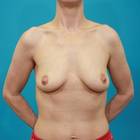

Front view
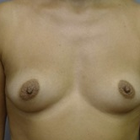
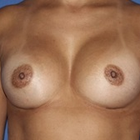
Front view


Front view
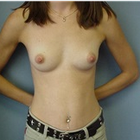

Front view
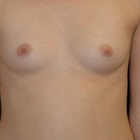
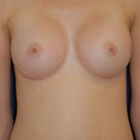
Front view
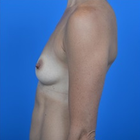
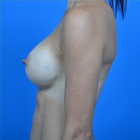
Full-side view
WHY US?
At Medijump, we're making medical easy. You can search, compare, discuss, and book your medical all in one place. We open the door to the best medical providers worldwide, saving you time and energy along the way, and it's all for FREE, no hidden fees, and no price markups guaranteed. So what are you waiting for?

Free

Best Price

Widest Selection

Risk-Free
What you need to know about Breast Augmentation in Philippines
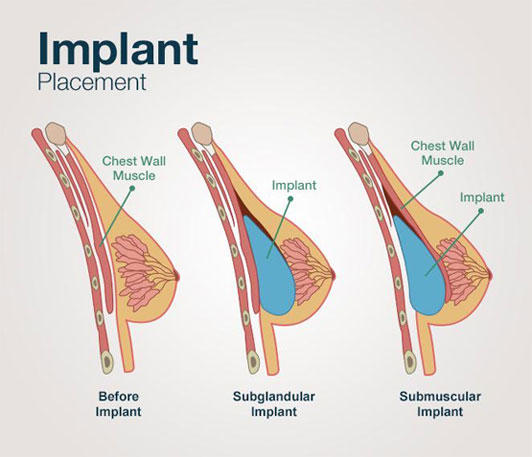
Breast augmentation, also known as a Boob Job or Breast Enlargement, is a surgical procedure aimed at increasing breast size, enhancing shape, or improving symmetry. In Philippines, this procedure is carried out by board-certified plastic surgeons in accredited medical facilities, ensuring both safety and quality.
What is the cost of Breast Augmentation in Philippines?
Prices in Philippines are competitive, often offering savings without compromising on quality, especially when compared to costs in the US or Europe. However, factors such as surgeon’s fees, facility costs, and the type of implants affect the total cost.
What does a Breast Augmentation Procedure Involve?
The surgery involves placing breast implants under the breast tissue or chest muscles. Choices between saline or silicone implants can be made based on the desired feel and appearance. This is something your surgeon will discuss with you prior to even travelling.
How Long Should I Stay in Philippines for a Breast Augmentation Procedure?
The length of stay in Philippines for a Breast Augmentation is subject to various factors, such as your overall health, the specific nature of the procedure, and your individual recovery rate. Generally, Breast Augmentation surgery is an outpatient process, meaning you may be able to return home on the same day. However, a stay of up to two days might be necessary if your procedure is more intricate.
Although the hospital stay is relatively brief, it is advisable to remain in Philippines for at least one-week post-procedure. This timeframe allows for initial recovery and a follow-up appointment with the surgeon. Moreover, in the event of any complications, prompt medical assistance will be accessible. Thorough knowledge of the recovery process and its duration is crucial for proper preparation and managing stress during treatment.
What's the Recovery Time for Breast Augmentation Procedures in Philippines?
Post-surgery, a recovery period of one to two weeks is generally required, with follow-up visits to the surgeon. It's crucial to follow all post-op instructions for optimal healing.
Experiencing swelling and discomfort following the operation is normal, both of which should gradually alleviate with time. You will be required to wear a compression garment, take prescribed medications, and maintain a healthy lifestyle for an effective recovery.
What sort of Aftercare is Required for Breast Augmentation Procedures in Philippines?
Post-operative care is critical for the success of a Breast Augmentation. The initial recovery phase usually includes prescribed medications to alleviate pain and avert infection. Individuals can normally resume everyday activities within a few weeks, depending on their healing pace and bodily responses. However, it is advisable to refrain from vigorous activities for a minimum of six weeks post-procedure.
What's the Success Rate of Breast Augmentation Procedures in Philippines?
In Philippines, Breast Augmentation boasts a relatively high success rate, which contributes to its immense popularity among individuals seeking improvements in their physical appearance. Numerous patients have reported satisfaction and enhanced confidence after undergoing the procedure, making it a widely favoured cosmetic surgery.
Are there Alternatives to Breast Augmentation Procedures in Philippines?
In Philippines, there are several alternatives to the Breast Augmentation. If you're considering breast augmentation strictly for cosmetic reasons and prefer non-surgical options, various suitable methods are available. Alternatives include fat grafting, hormonal therapy, and natural remedies. Fat grafting, also known as fat transfer, involves removing fat from different body parts and injecting it into your breasts. This approach is regarded as safer because it employs the body's tissue, minimizing complications.
What Should You Expect Before and After the Procedure?
Prior to the procedure, your surgeon will discuss your expectations and the anticipated outcomes of your Breast Augmentation. The preoperative consultation comprises an in-depth conversation about your medical history, a physical examination, and an outline of the procedure and postoperative care. Open and candid communication with your healthcare provider is crucial at this stage to ensure the treatment matches your objectives.
Post-procedure, initial swelling and discomfort are normal and can be managed with prescribed medication. It's vital to adhere to your surgeon's post-operative guidelines, which include caring for surgical incisions, taking prescribed medications, and attending follow-up appointments. As swelling subsides and incision lines fade gradually, your enhanced breast profile will become apparent.
Keep in mind that the decision to pursue a Breast Augmentation is deeply personal and should not be made hastily. Allocate time to consider the advantages and drawbacks, and ensure you are well-informed.
What are the Risks and Complications of Breast Augmentation Procedures in Philippines?
As is the case with any surgical intervention, Breast Augmentation comes with its own set of risks and potential complications that need to be considered. These may include infections, bleeding, alterations in nipple or breast sensations, implant leakage or rupture, development of scar tissue, and unsatisfactory outcomes that could necessitate further surgeries.
Some individuals may also encounter complications tied to anesthesia, such as respiratory problems and reactions to medication. The psychological ramifications should not be overlooked, considering surgical procedures can impact mental well-being. An extensive conversation with your healthcare provider about these potential risks remains a key component in making an informed choice.
How to Prepare for Breast Augmentation in Philippines?
Thorough preparation plays a significant role in the success of your Breast Augmentation. Before the surgery, you must have detailed conversations with your surgeon about your medical background, allergies, current medications, and lifestyle habits such as smoking or alcohol consumption. You may need to cease certain medications and habits, including smoking, weeks before the procedure, as they can influence the healing process.
Practical preparations like organizing for someone to be with you on the day of the surgery, scheduling sufficient time off work for recovery, and establishing a comfortable space at home for recuperation can contribute to a smoother post-operative phase. Your surgeon's team will also advise you on pre-operative fasting and hygiene guidelines.
What are some Common Misconceptions about Breast Augmentation?
Despite its widespread popularity, numerous misconceptions surround the Breast Augmentation. One such misconception asserts that breast implants are permanent. In actuality, breast implants may require replacement after 10-15 years, with the specific timeframe depending on individual health and lifestyle factors. Another false assumption is that breast augmentation solely serves vanity purposes. In reality, many patients undergo this procedure following mastectomy or as part of gender-affirming surgery.
A further common myth suggests that breast augmentation hinders breastfeeding. While a few instances might affect breastfeeding, the majority of individuals with breast implants can successfully breastfeed.
Whilst the information presented here has been accurately sourced and verified by a medical professional for its accuracy, it is still advised to consult with your doctor before pursuing a medical treatment at one of the listed medical providers
No Time?
Tell us what you're looking for and we'll reachout to the top clinics all at once
Enquire Now

Popular Procedures in Philippines
Prices Start From $834

Prices Start From $500

Prices Start From $93

Prices Start From $85

Prices Start From $477

Prices Start From $931

Recommended Medical Centers in Philippines for Breast Augmentation

- Interpreter services
- Translation service
- Religious facilities
- Medical records transfer
- Medical travel insurance
- Health insurance coordination
- TV in the room
- Safe in the room
- Phone in the room
- Private rooms for patients available

- Interpreter services
- Translation service
- Religious facilities
- Medical records transfer
- Medical travel insurance
- Health insurance coordination
- TV in the room
- Safe in the room
- Phone in the room
- Private rooms for patients available

- Interpreter services
- Translation service
- Religious facilities
- Medical records transfer
- Medical travel insurance
- Health insurance coordination
- TV in the room
- Safe in the room
- Phone in the room
- Private rooms for patients available

- Interpreter services
- Translation service
- Religious facilities
- Medical records transfer
- Medical travel insurance
- Health insurance coordination
- TV in the room
- Safe in the room
- Phone in the room
- Private rooms for patients available

- Interpreter services
- Translation service
- Religious facilities
- Medical records transfer
- Medical travel insurance
- Health insurance coordination
- TV in the room
- Safe in the room
- Phone in the room
- Private rooms for patients available

- Interpreter services
- Translation service
- Religious facilities
- Medical records transfer
- Medical travel insurance
- Health insurance coordination
- TV in the room
- Safe in the room
- Phone in the room
- Private rooms for patients available

- Interpreter services
- Translation service
- Religious facilities
- Medical records transfer
- Medical travel insurance
- Health insurance coordination
- TV in the room
- Safe in the room
- Phone in the room
- Private rooms for patients available

- Interpreter services
- Translation service
- Religious facilities
- Medical records transfer
- Medical travel insurance
- Health insurance coordination
- TV in the room
- Safe in the room
- Phone in the room
- Private rooms for patients available

- Interpreter services
- Translation service
- Religious facilities
- Medical records transfer
- Medical travel insurance
- Health insurance coordination
- TV in the room
- Safe in the room
- Phone in the room
- Private rooms for patients available

- Interpreter services
- Translation service
- Religious facilities
- Medical records transfer
- Medical travel insurance
- Health insurance coordination
- TV in the room
- Safe in the room
- Phone in the room
- Private rooms for patients available














